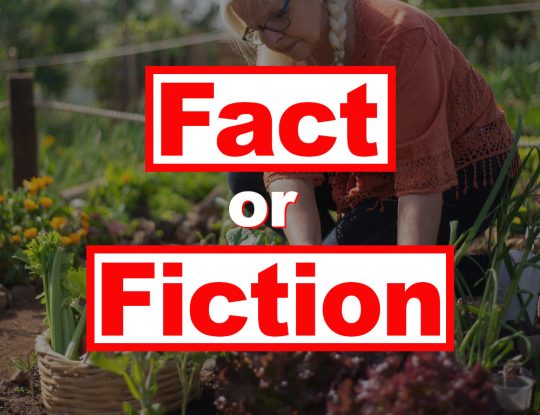by Shannon Moreau

Gardening is the perfect union of science based growing and anecdotal evidence. I have been stumped many times by plants that performed differently than they were supposed to “on paper.” So where do we draw the line between what sounds too good to be true and actual fantasy? Let’s tackle a few of the most common myths about plant care and gardening to see where the truth lies.
Roses can be rooted in potatoes
It’s safe to say that we’ve all seen the quick craft videos or dozens of gardening blogs featuring this propagation method for roses. The basic idea is to take a cutting from a beloved rose, dip it into rooting hormone, stick it into a potato, and plant it in your garden or a container. While this one is fun, the real magic is in the rooting hormone. The consistent moisture of the potatoes is a good way of keeping the new cutting from drying out and protected from environmental stress. You can get the same results by taking your cuttings, dipping them in rooting hormone, and placing them into good potting soil. Afterwards place them into a dome for seed starting, or even a large ziploc bag that can be opened to allow in fresh air.
Calcium is the sole cause of blossom end rot and can only be managed with heavy fertilization
While calcium is a very important nutrient for tomatoes and other closely related crops, it is not the sole cause of blossom end rot. This disorder can also result from water stress while the fruit is being set. This stress can be due to either poor drainage in the garden or drought stress following hot temperatures. Heat and drought stress in Colorado may be familiar issues, but overwatering is just as dangerous. Waterlogged soils can lead to poor nutrient uptake and thus result in blossom end rot. The solution is to ensure proper fertilization with a balanced fertilizer that contains calcium along with a dependable watering schedule to minimize any stress.
Epsom salts are a great fertilizer
This common household item is good for our aches and pains but can it actually help in your garden? While it is technically a salt, epsom salt (magnesium sulfate) bears little resemblance to its more well known sodium-based cousins. While magnesium and sulfur are important macronutrients to all plants, epsom salts are not a reliable way to address nutrient deficiencies in your garden. Epsom salts are not chemically formulated in a way that ensures the elements will be easily available to plants, which can result in excess mineral buildup in your soil with no significant benefit to your plants.
Instead of applying epsom salts, first test your soils to see if they are deficient in anything. If they are, address your fertilization needs with a concentrated slow release formula from your garden center or, if you are addressing minor nutrient concerns, find a well balanced fertilizer that contains the necessary vital nutrients.
Hair and Fingernail clippings have many uses in the garden
This one might not be for the squeamish. The most commonly recommended uses for these two are in compost piles to add nitrogen and around garden beds to deter pests such as squirrels and rabbits. While this is rooted in truth, the application of these is what makes it a tall tale. Hair and fingernails are sources of nitrogen but they take a very long time to break down and you would need a large supply for an average compost pile. This means you’d be reminded of previous year’s hairstyles for quite a while. The other caveat is that you cannot use hair that’s been treated with chemical dyes and your nails must not have any nail polish on them.
As for deterring pests, those clippings can be used with a few catches. This repellent is handy because it’s simple–your garden beds will smell like you and those critters are afraid of humans! The tough part is volume and avoiding anything with chemicals. The rabbits, mice, and squirrels steer clear of these smells; birds will often use fur or hair in their bird’s nests. If you do decide to use these in the garden be aware some of it may be carried away!
At the core of each of these common gardening myths is the reapplication of a common household item as a quick fix. While many of them can potentially work, these hacks don’t end up saving us time or drastically improving the conditions of our plants. My favorite part about gardening is that there really isn’t one easy fix-all. The combination of nourishing soils by using organic matter and being mindful of plant variety selection will do far more for your garden than any quick fix!
Originally published on November 30th, 2023.
